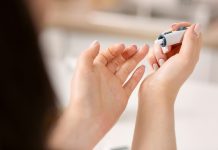
A new wireless system developed by a KAIST research team is set to revolutionize the way medical professionals monitor wound healing, particularly for diabetic patients who suffer from chronic wounds due to complications in blood circulation.
Led by Professor Kyeongha Kwon from the School of Electrical Engineering and in collaboration with Professor Hanjun Ryu from Chung-Ang University, this digital healthcare technology offers a real-time tracking of the wound healing process, enabling timely and appropriate treatments.
The significance of this development lies in its ability to monitor the spatiotemporal temperature changes and heat transfer characteristics of wounds.
Such detailed monitoring is crucial because the skin acts as a protective barrier against harmful substances, and any damage to it can lead to severe health risks, especially in individuals requiring intensive care.
Chronic wounds in diabetic patients present a substantial challenge due to their slow healing process, contributing to billions of dollars in medical costs in the United States alone. Personalized wound management is key, as the condition of each patient’s wounds varies significantly.
By tracking the heat response within wounds and measuring heat transfer characteristics to observe moisture changes, this technology provides a novel approach to understanding the formation of scar tissue.
Experiments conducted on diabetic mouse models have demonstrated the system’s ability to accurately track the healing process and scar tissue formation.
A pivotal feature of this system is the use of biodegradable sensor modules that naturally decompose within the body, eliminating the risk of tissue damage or discomfort when removing traditional tracking devices.
This innovation not only makes the device safer but also allows for its potential use inside the wound area without the necessity for removal.
Professor Kwon believes that continuous monitoring of wound temperature and heat transfer characteristics will greatly enhance the ability of medical professionals to assess and treat diabetic wounds effectively.
Furthermore, the research team is exploring the integration of antimicrobial materials into the device.
This advancement aims to enable the device to also monitor and prevent inflammatory responses, bacterial infections, and other complications, providing a comprehensive solution for wound care both in hospital settings and at home.
By offering real-time antimicrobial monitoring capabilities, this technology is poised to become a multi-purpose wound monitoring platform, signaling a significant leap forward in wound care management.
Published in Advanced Healthcare Materials, the research holds promise for significantly improving the quality of life for patients suffering from chronic wounds, streamlining the healing process, and reducing the economic burden on healthcare systems.
If you care about diabetes, please read studies about new way to achieve type 2 diabetes remission, and one avocado a day keeps diabetes at bay.
For more information about diabetes, please see recent studies about 5 dangerous signs you have diabetes-related eye disease, and results showing why pomegranate is super fruit for people with diabetes.
The research findings can be found in Advanced Healthcare Materials.
Copyright © 2024 Knowridge Science Report. All rights reserved.


